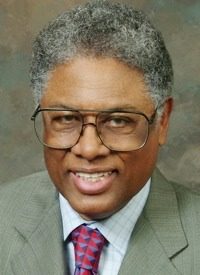
The 1980s? Wasn’t that the years of the Reagan administration, the “decade of greed,” the era of “neglect” of the poor and minorities, if not “covert racism”?
More recently, during the administration of America’s first black president, a 2011 report from the Pew Research Center has the headline, “Wealth Gaps Rise to Record Highs Between Whites, Blacks and Hispanics.”
While the median net worth of whites was ten times the median net worth of blacks in 1988, the last year of the Reagan administration, the ratio was nineteen to one in 2009, the first year of the Obama administration. With Hispanics, the ratio was eight to one in 1988 and fifteen to one in 2009.
Race is just one of the areas in which the rhetoric and the reality often go in opposite directions. Political rhetoric is intended to do one thing — win votes. Whether the policies that accompany that rhetoric make people better off or worse off is far less of a concern to politicians, if any concern at all.
Democrats receive the overwhelming bulk of the black vote by rhetoric and by presenting what they have done as the big reason that blacks have advanced. So long as most blacks and whites alike mistake rhetoric for reality, this political game can go on.
A Manhattan Institute study last year by Edward Glaeser and Jacob Vigdor showed that, while the residential segregation of blacks has generally been declining from the middle of the 20th century to the present, it was rising during the first half of the 20th century. The net result is that blacks in 2010 were almost as residentially unsegregated as they were back in 1890.
There are complex reasons behind such things, but the bottom line is plain. The many laws, programs and policies designed to integrate residential housing cannot be automatically assumed to translate into residentially integrated housing. Government is not the sole factor, nor necessarily the biggest factor, no matter what impression political rhetoric gives.
No city is more liberal in its rhetoric and policies than San Francisco. Yet there are less than half as many blacks living in San Francisco today as there were in 1970.
Nor is San Francisco unique. A number of other very liberal California counties saw their black populations drop by 10,000 people or more, just between the 1990 and 2000 censuses — even when the total population of these counties was growing.
One of the many reasons why rhetoric does not automatically translate into reality is that the ramifications of so many government policies produce results completely different from what was claimed, or even believed, when these policies were imposed.
The poverty rate among blacks was nearly cut in half in the 20 years prior to the 1960s, a record unmatched since then, despite the expansion of welfare state policies in the 1960s.
Unemployment among black 16 and 17-year-old males was 12 percent back in 1950. Yet unemployment rates among black 16 and 17-year-old males has not been less than 30 percent for any year since 1970 — and has been over 40 percent in some of those years.
Not only was unemployment among blacks in general lower before the liberal welfare state policies expanded in the 1960s, rates of imprisonment of blacks were also lower then, and most black children were raised in two-parent families. At one time, a higher percentage of blacks than whites were married and working.
None of these facts fits liberal social dogmas.
While many politicians and “leaders” have claimed credit for black progress, no one seems to be willing to take the blame for the retrogressions represented by higher unemployment rates, higher crime rates, and higher rates of imprisonment today. Or for the disintegration of the black family, which survived centuries of slavery and generations of government-imposed discrimination in the Jim Crow era, but began coming apart in the wake of the expansion of the liberal welfare state and its accompanying social dogmas.
The time is long overdue to start looking beyond the prevailing political rhetoric to the hard realities.
Thomas Sowell is a senior fellow at the Hoover Institution, Stanford University, Stanford, CA 94305. His website is www.tsowell.com. To find out more about Thomas Sowell and read features by other Creators Syndicate columnists and cartoonists, visit the Creators Syndicate Web page at www.creators.com.
COPYRIGHT 2012 CREATORS.COM


